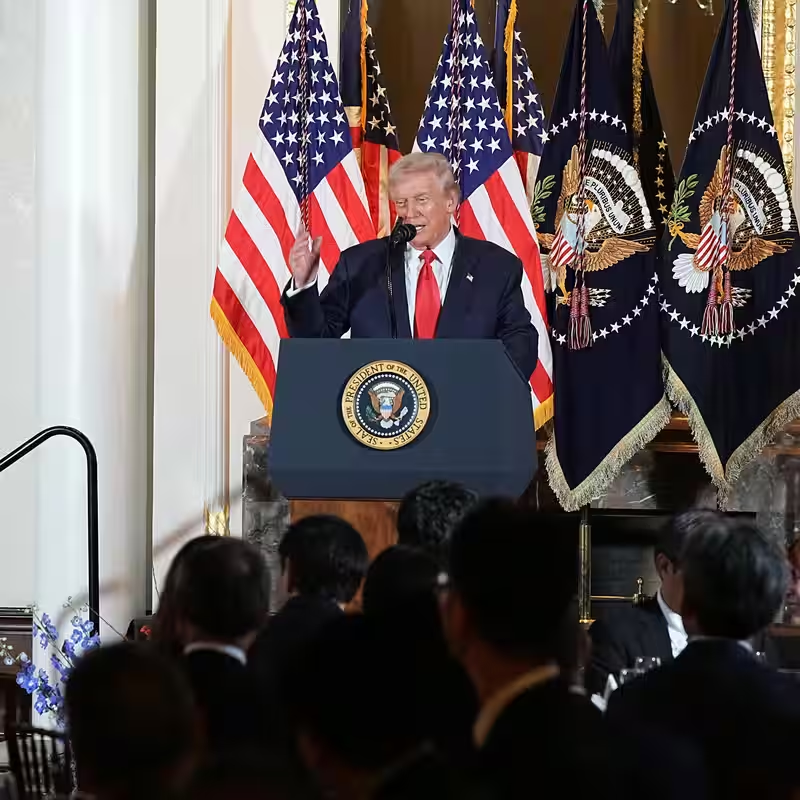Toyota is making a historic shift in its sales strategy—agreeing to sell American-made vehicles in Japan for the first time—as part of a broader corporate response to pressure from U.S. President Donald Trump over persistent trade imbalances .
Table of Contents
- Trump’s Tokyo Visit Sparks Corporate Pledges
- What Toyota’s Move Really Means
- $550 Billion in Japanese U.S. Investments Announced
- The U.S.-Japan Auto Trade Gap
- Broader Implications for Global Trade
- Sources
Trump’s Tokyo Visit Sparks Corporate Pledges
During a high-profile visit to Tokyo on Tuesday, President Trump directly challenged Japanese business leaders to do more to address what he called “unfair” trade practices. In response, top Japanese corporations—including Toyota, SoftBank, Panasonic, Mitsubishi Heavy Industries, and Toshiba—announced a wave of new commitments to invest in and import from the United States .
These pledges are tied to a previously negotiated $550 billion trade and investment framework between Japan and the U.S., aimed at easing tensions and reducing America’s massive trade deficit with Japan.
What Toyota’s Move Really Means
Toyota’s announcement marks a symbolic and strategic reversal. For decades, the automaker has exported millions of vehicles from Japan to the U.S., but American-made Toyotas—produced in plants across Kentucky, Texas, and Indiana—have rarely, if ever, been sold back in the Japanese domestic market .
Now, Toyota will not only begin importing its U.S.-built models like the Camry and Tacoma for sale in Japan but will also open its Japanese dealership network to other American automakers—a major concession in a market long criticized for being closed to foreign brands.
“This isn’t just about cars—it’s about reciprocity,” said a senior White House official in a memo outlining the agreement .
$550 Billion in Japanese U.S. Investments Announced
Beyond autos, Japan’s Ministry of Economy, Trade and Industry confirmed that Japanese firms are moving forward on multibillion-dollar U.S. projects, including:
- A next-generation nuclear reactor initiative worth up to $100 billion, led by Mitsubishi Heavy and Toshiba
- AI and semiconductor infrastructure investments by SoftBank and Panasonic
- Expanded manufacturing and R&D hubs across the American Midwest and South
These efforts are designed to create U.S. jobs and signal Japan’s willingness to rebalance the economic relationship.
The U.S.-Japan Auto Trade Gap
The auto sector has long been a flashpoint. Japan exports over 1.5 million vehicles to the U.S. annually, while American-made cars account for less than 1% of Japan’s passenger vehicle market . Cultural preferences for compact, fuel-efficient models and complex dealership regulations have historically limited U.S. brands like Ford and GM in Japan.
Toyota’s new policy could begin to crack that barrier—though analysts caution that consumer demand remains the ultimate hurdle.
Broader Implications for Global Trade
This deal reflects a broader trend under the Trump administration: using bilateral pressure to extract concessions, rather than relying on multilateral trade bodies like the WTO. While critics argue this approach risks trade wars, supporters say it delivers tangible results for American workers.
For Japan, the move is both pragmatic and defensive. With U.S. tariffs always looming, corporate Japan appears to be choosing cooperation over confrontation—at least for now.




